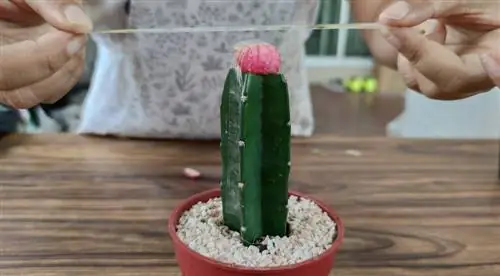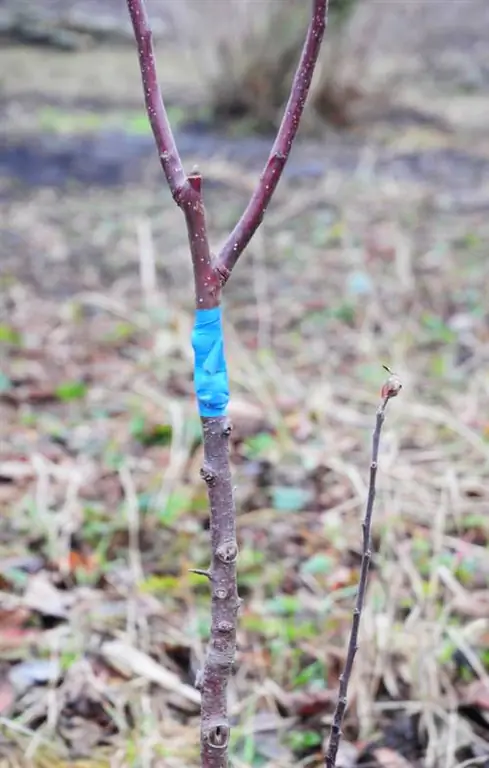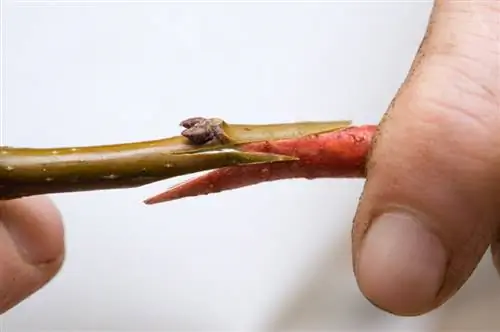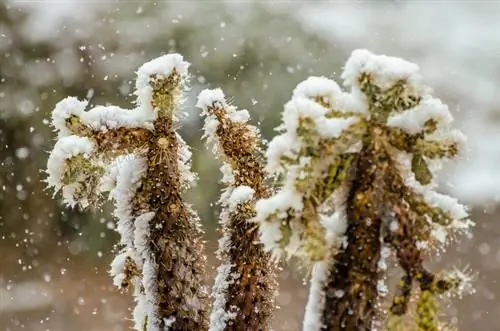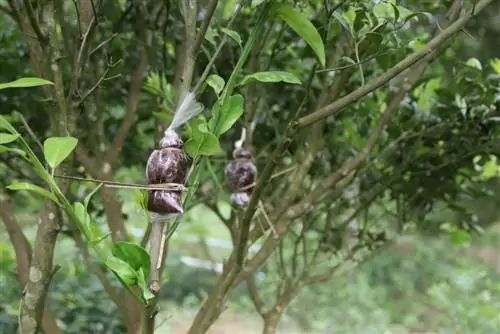- Author admin [email protected].
- Public 2023-12-16 16:46.
- Last modified 2025-01-23 11:22.
Grafting is a frequently used form of propagation and breeding of plants. This involves adding a so-called scion of one species or variety to the base of another species or variety. How does grafting work on cacti?
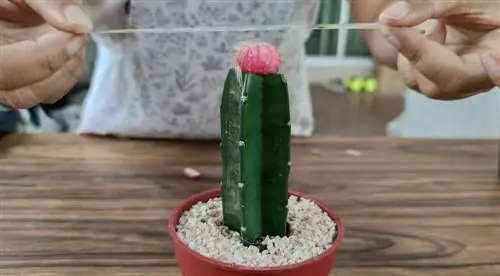
How does cactus grafting work?
When grafting cacti, a scion is placed on a robust base. Commonly used rootstocks are Hylocereus undatus, Cereus peruvianus and Eriocereus jusbertii. Grafting is done during the growth period between March and August and it is important to pay attention to cleanliness and precise cuts.
Why do you graft cacti?
Cacti are grafted for different reasons:
- Grafted cacti grow faster.
- Late flowering species are more likely to flower.
- In the event of a root infection (e.g. by a fungus), grafting can save the cactus.
- Difficult to maintain or very sensitive species can be hardened by grafting.
The measure is also carried out because grafted cacti have a bizarre appearance and are therefore often collected and cared for by enthusiasts.
Which cacti are suitable for grafting?
Not every cactus is suitable for grafting. Cacti and spurge plants are mainly used as a base and have the following properties:
- Rootstock should belong to the same family as the scion.
- It should belong to a fast-growing species.
- It should be insensitive and robust.
- This also includes a low sensitivity to diseases and care errors.
Frequently used and therefore tried and tested documents are:
- Hylocereus undatus: dragon fruit or pitahaya, as a base for refinements that do not produce chlorophyll themselves
- Cereus peruvianus: Columnar cactus or rock cactus, grafts grow particularly quickly on this base.
- Eriocereus jusbertii: This rootstock is suitable for grafts that should flower more quickly.
Various types of Echinopsis, Opuntia, Echinocereus and Wilcoxia also offer suitable rootstocks. Grafting on Selenicereus species, especially Selenicereus setaceus, as well as the Trichocereus species Trichocereus pachanoi and Trichocereus peruvianus are also promising. These rootstocks are uncomplicated and the grafting is usually successful.
How can you graft cacti yourself?
Grafting cacti is not that easy, and you also have to pay close attention to cleanliness! All tools should be freshly sharpened and disinfected so that no pathogens are introduced into the plants. The optimal time is during the growth phase between March and August. In winter, many cacti are in the dormant phase, so you should postpone the project if possible. When grafting, proceed as follows:
- Water the rootstock and graft thoroughly in the days beforehand.
- Separate the head of the base with a smooth, straight cut.
- If possible, start directly below a new growth.
- Then bend the ribs at a slight angle.
- Separate the scion from the mother plant and bevel the edges here too.
- Now push the scion from the side onto the base.
- Make sure that the large pathways of both cacti are on top of each other.
- Secure the cacti with rubber bands that are stretched criss-cross from the bottom of the pot.
Now place a translucent hood (such as a cut-off PET bottle or a freezer bag) over the graft, making sure not to touch it. Place the pot in a bright place with a temperature of around 20 °C without direct sun and water at a normal rhythm.
Tip
How slot grafting works
Cacti with flat shoots such as Schlumbergera obviously cannot be grafted as described above. Here you make slit-shaped incisions into the base into which the scions are inserted and fixed.
How can you graft cacti yourself?
- Only use species from the same cactus family as support.
- Rootware should be robust, insensitive and fast-growing.
- The only tool you need is a sharp knife.
- This should be disinfected after every cut so as not to introduce any germs.
- A distinction is made between flat and slot grafting.

